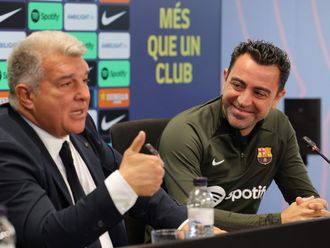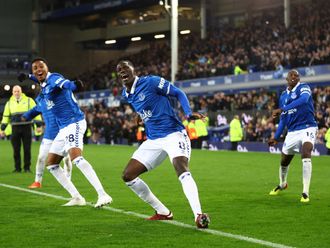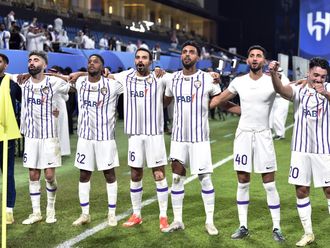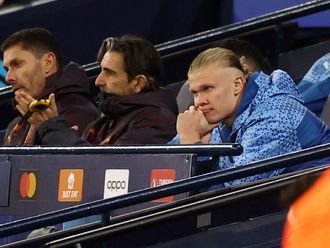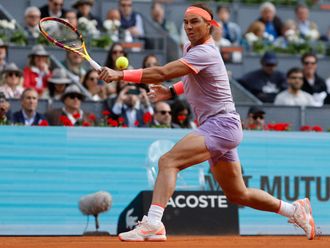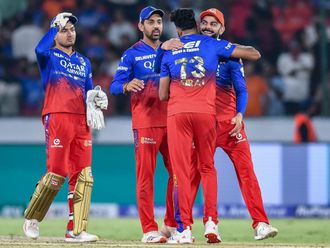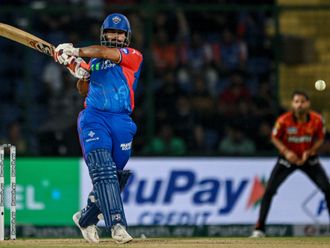London
Twelve months ago, Daniel Sturridge was in Boston at the invitation of Fenway Sports Group, the owners of Liverpool, who were keen that the player in whom they had invested so much be given the best medical care available after a season in which he had figured far too seldom.
By then, he had long since played his last game of an injury-racked season, and there was the lingering bad blood between Roy Hodgson and Brendan Rodgers over who was to blame for the original injury that had struck during an England training session in September. Sturridge has still played just twice for England since September 2014 — in the March friendly against Holland and briefly Portugal on Thursday. Yet when Hodgson called his chosen 23 together in the analysis room at The Grove hotel after lunch to congratulate them on their selection and hand out the squad numbers for the tournament, few will have been surprised to see Sturridge.
He is an independent-minded footballer, a man apart from the rest of the crowd, and there is no doubting the regard in which Hodgson holds him.
‘Most talented player’
Jurgen Klopp, the Liverpool manager, may have seen fit to leave Sturridge out of key Europa League ties in the last few months — although not the final, as it turned out — but Hodgson sees the player very differently. He regards the 26 year old as potentially the most talented player at his disposal, and his feeling was that if Sturridge could prove his fitness then there was no question he would be in the squad for France.
As Hodgson saw it, the difficult decisions lay elsewhere. Sturridge is the mercurial type whom managers either trust or do not, but although he has scored just five goals, and only one in a tournament, during Hodgson’s tenure as manager — 51 games and counting — there is no doubting the connection. It felt as if it was not whether Hodgson could afford to take Sturridge to France, but more a case that he believed he could not afford to leave the player behind.
In the end the choice was between an extra attacker or an extra midfielder, and Hodgson picked the breakthrough Manchester United teenager Marcus Rashford over Danny Drinkwater. This is, the Football Association believes, the youngest squad it has taken to a European Championship in its history and one that has also been relatively free of injuries to its key figures.
With the exception of Danny Welbeck and Luke Shaw it is hard to think of many whom Hodgson has been denied through injury. Alex Oxlade-Chamberlain, currently injured, is a favourite of the England manager but he, too, would need to have been playing well to force his way in. There is a deficit of centre-halves in the squad because there is a deficit of English centre-halves full stop, and no one is interested in having the John Terry debate again. Andros Townsend built a stronger case for inclusion than Theo Walcott towards the end of the season although he was only ever regarded as a backup by Hodgson — leaving both out does mean the team are short of naturally wide players with pace.
It is inevitable that more instinctively central players such as Jamie Vardy, Wayne Rooney, and possibly even Sturridge, will be forced to occupy the wider positions.
Striking talent
This is the squad that will determine whether Hodgson manages the national team to a fourth tournament. It feels like he has tried to load his squad with the striking talent to win games one way or another. England have struggled for goals in his previous two tournaments — five at Euro 2012, two in Brazil two years later. Hodgson has often said that he has never seen the point in selecting players in a tournament squad that he cannot envisage picking to start games, just so he can keep the balance of two players for every position.
His squad for this summer has that alternative feel to it: a box of tricks that holds plenty of interest for the England manager if not quite the sensible toolbox that can fix every problem that might arise.
Only 10 of the 20 outfield players selected in Hodgson’s squad for the 2014 World Cup have been picked this time around and while injuries have influenced that to some extent, it does show that the team is changing.
This is the first squad since Euro 1992 that does not include any member of the so-called golden generation, that group defined as 16 players who have dominated the England team to varying degrees since Euro 1996.
Hodgson would like to be around for the 2018 World Cup in Russia when so many of these current players will have matured and, if trends continue, there may even be a handful of new names emerging through the Premier League.
— The Telegraph Group Limited, London 2016


